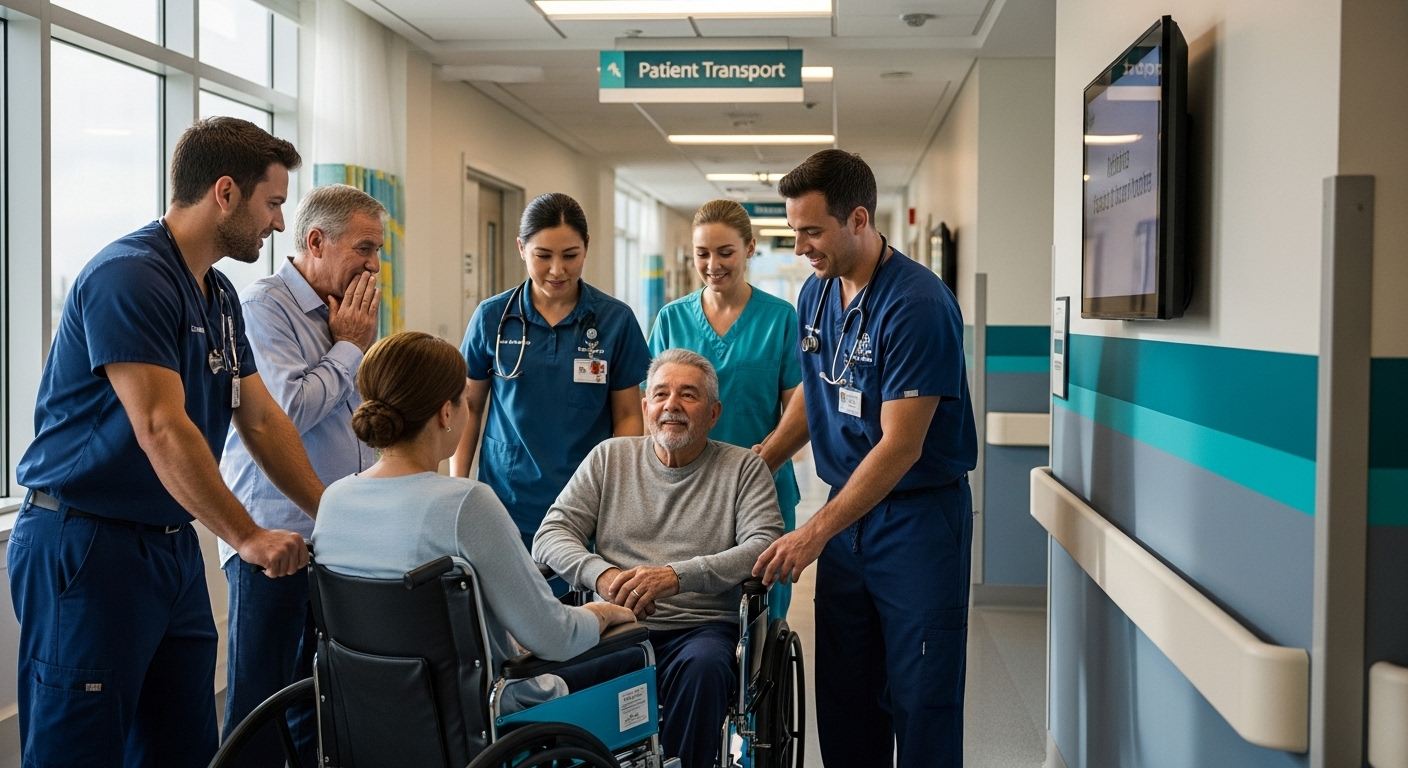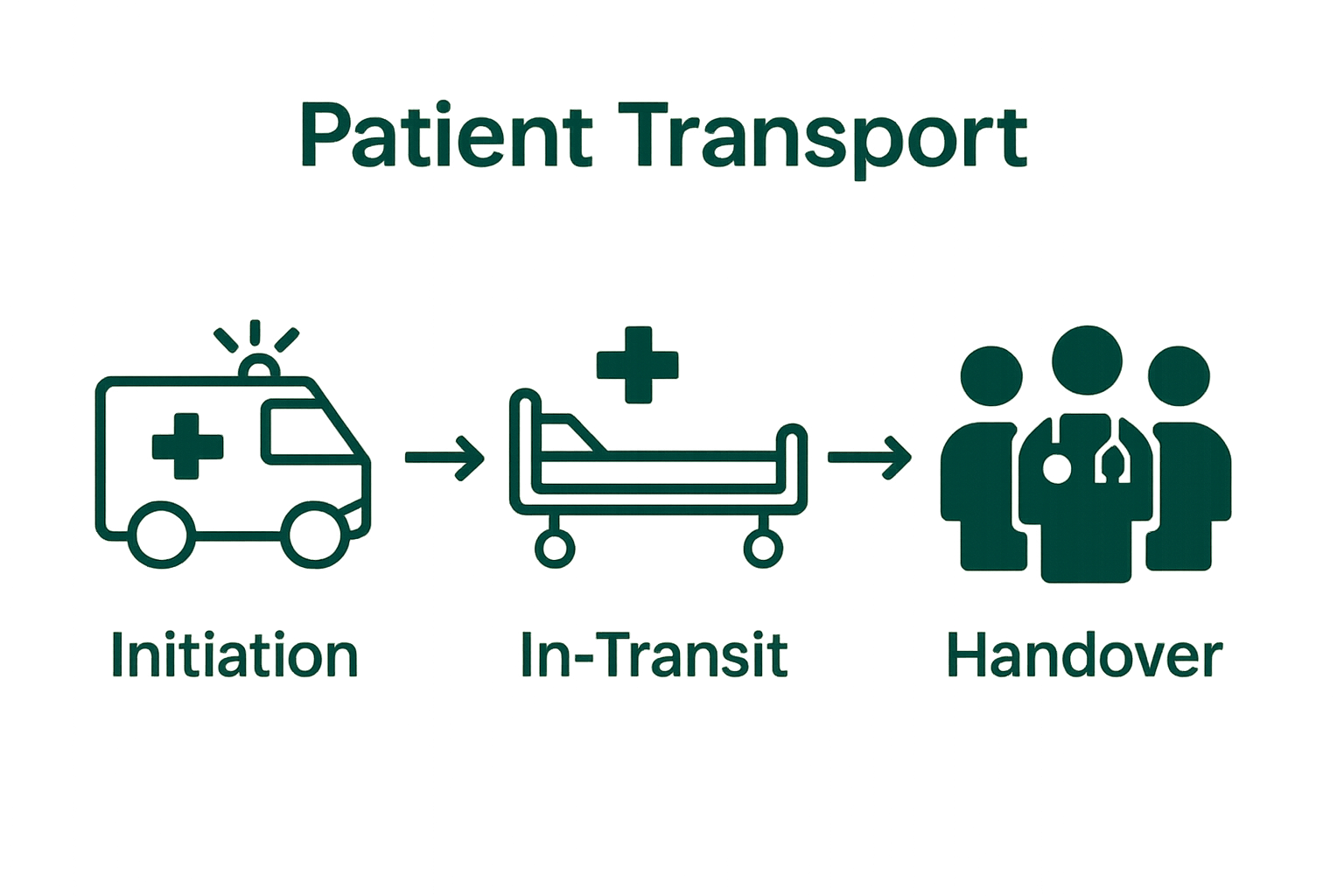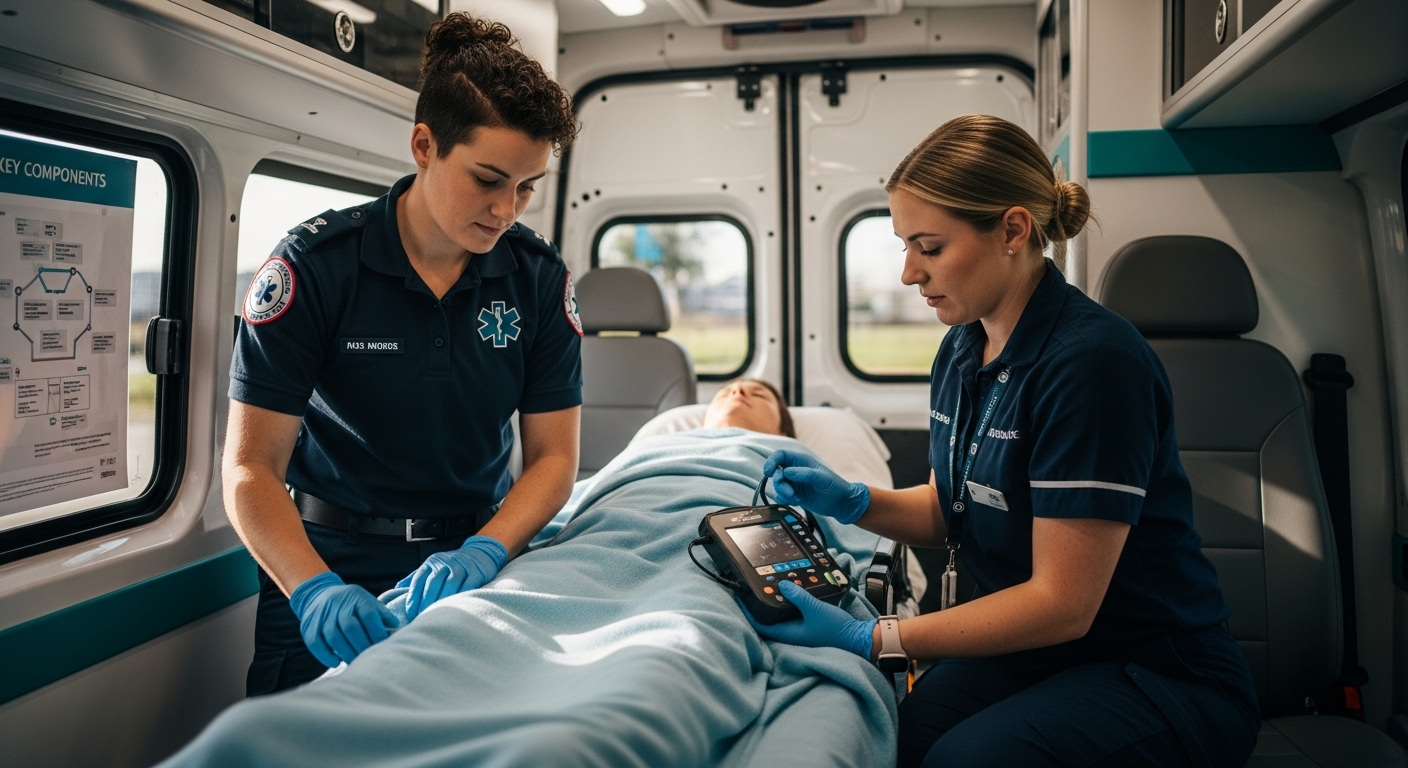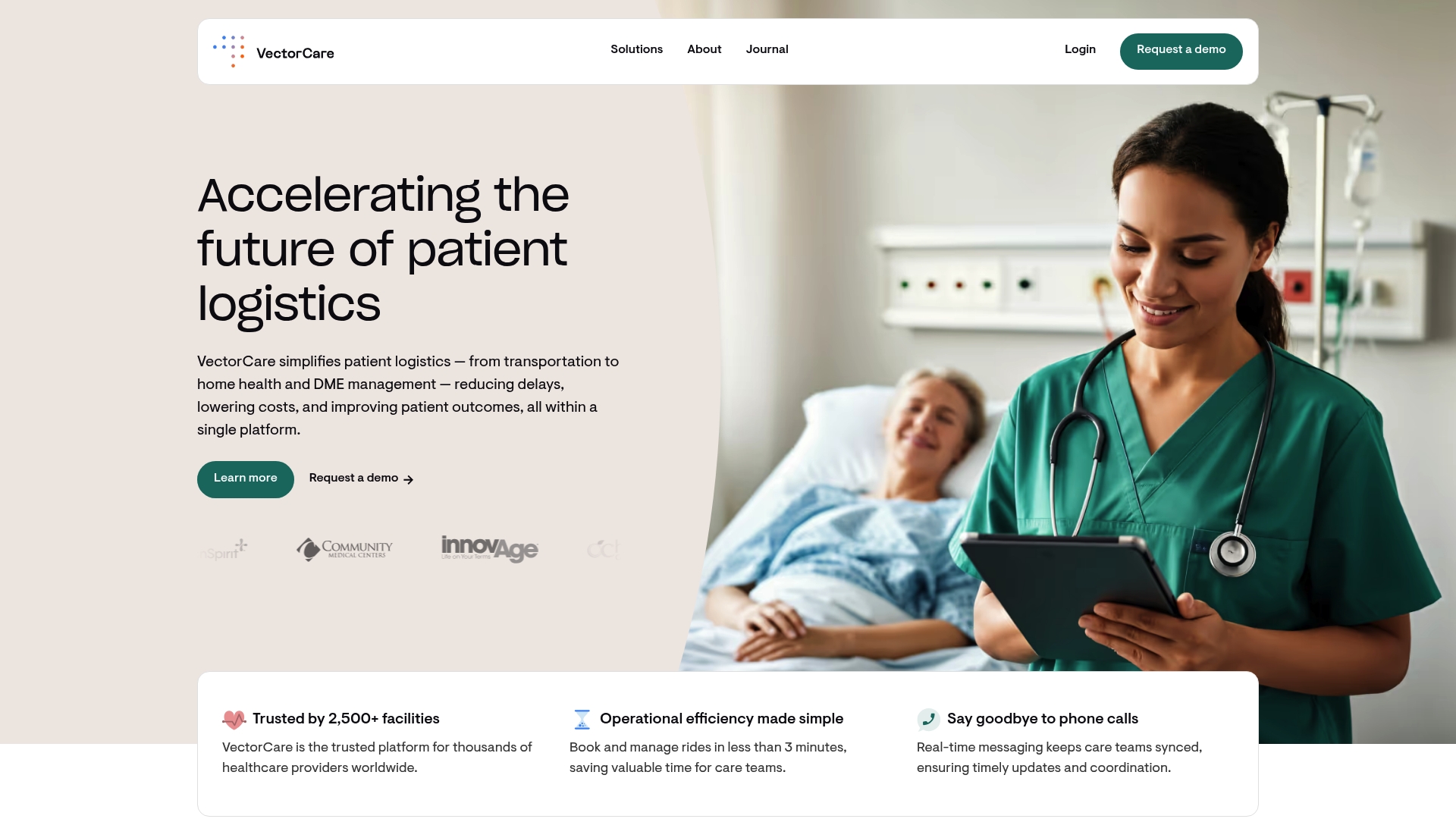What is Patient Transport? Understanding Its Importance

Patient transport might sound like a straightforward task in healthcare but the reality is a lot more complex. Think about this. Research shows that effective patient transport significantly reduces medical complications and improves patient outcomes. Surprising as it may seem, moving patients safely is not just about getting someone from point A to point B. It is a layered process that blends medical expertise, planning, and constant monitoring, often making the difference between life and death.
Table of Contents
- Defining Patient Transport: A Core Concept In Healthcare
- The Importance Of Patient Transport In Healthcare Systems
- How Patient Transport Works: Mechanisms And Processes
- Key Components And Challenges Of Patient Transport Services
Quick Summary
| Takeaway | Explanation |
|---|---|
| Patient transport ensures medical continuity | Systematic transfer of patients is vital for consistent medical care across facilities and departments. |
| Effective transport requires extensive planning | Successful patient movement involves careful coordination, skilled personnel, and the right medical equipment. |
| Safety and comfort are top priorities | Patient dignity and safety during transport must be prioritized to enhance overall care experience. |
| Technological support improves efficiency | Advanced tracking and monitoring systems help ensure safe patient transport and timely medical responses. |
| Continuous assessment is essential | Regular evaluations of patient condition before and during transport are crucial for managing risks and ensuring needs are met. |
Defining Patient Transport: A Core Concept in Healthcare
Patient transport represents a critical healthcare function that goes far beyond simple physical movement from one location to another. At its core, patient transport involves the systematic and safe transfer of individuals requiring medical care between healthcare facilities, departments, or treatment areas, ensuring continuous and coordinated medical support throughout the journey.
The Comprehensive Nature of Patient Transport
Patient transport encompasses multiple dimensions of healthcare logistics, requiring precision, expertise, and specialized protocols. Research from the National Institutes of Health highlights that effective patient transport involves several key components:
- Ensuring patient safety during movement
- Maintaining continuous medical monitoring
- Preserving patient comfort and dignity
- Managing potential medical complications during transit
Healthcare professionals recognize patient transport as a complex process that demands meticulous planning and execution. Whether transferring a patient between hospital units, from an emergency room to an intensive care unit, or between different medical facilities, each transportation scenario requires careful coordination and specialized skills.
Critical Elements of Successful Patient Transport
Successful patient transport relies on multiple interdependent factors. Medical teams must consider the patient’s current medical condition, required medical equipment, potential risks, and necessary interventions during transportation. Our guide on agnostic software in hospital patient logistics provides deeper insights into optimizing these complex logistics.
Key considerations include:
- Appropriate medical equipment and support systems
- Trained medical personnel capable of managing patient needs
- Clear communication protocols between transport teams
- Comprehensive patient assessment before and during transport
Ultimately, patient transport represents a crucial healthcare service that bridges medical interventions, ensuring patients receive timely and safe care across different healthcare settings. The process demands not just physical transportation, but a holistic approach that prioritizes patient well-being and medical continuity.
The Importance of Patient Transport in Healthcare Systems
Patient transport plays a pivotal role in modern healthcare delivery, serving as a critical infrastructure that connects various medical services and ensures patients receive timely and appropriate care. Beyond simple movement, patient transport represents a complex system that directly impacts patient outcomes, healthcare efficiency, and overall treatment effectiveness.
Strategic Impact on Healthcare Delivery
Healthcare systems rely on efficient patient transport to manage resources, coordinate care, and address diverse medical needs. Research from clinical studies indicates that well-organized patient transportation can significantly reduce medical complications and improve overall patient experience. The strategic importance of patient transport extends across multiple healthcare domains:
- Enabling specialized medical interventions
- Facilitating access to advanced treatment centers
- Supporting continuity of care across different medical facilities
- Optimizing resource allocation and patient flow
The ability to move patients safely and efficiently between healthcare settings is not just a logistical challenge but a critical medical necessity. Hospitals, emergency services, and specialized treatment centers depend on robust patient transport systems to maintain quality healthcare delivery.
Critical Considerations in Patient Transport
Effective patient transport involves complex decision-making processes that balance medical requirements, patient safety, and operational constraints. Our guide on addressing patient flow challenges explores the nuanced considerations healthcare providers must navigate.
Key strategic elements include:
- Comprehensive patient medical assessment
- Selection of appropriate transportation mode
- Ensuring continuous medical monitoring
- Managing potential risk factors during transit
Ultimately, patient transport is more than a supportive service; it is an integral component of healthcare systems that bridges medical interventions, ensures patient safety, and maintains the continuity of care across different treatment environments. The sophistication of patient transport mechanisms directly reflects a healthcare system’s ability to provide responsive, patient-centered medical services.
How Patient Transport Works: Mechanisms and Processes
Patient transport is a sophisticated healthcare mechanism involving multiple interconnected systems and professional protocols designed to ensure safe, efficient movement of patients across different medical environments. This complex process requires seamless coordination between healthcare professionals, advanced technological systems, and precise logistical planning.
Operational Workflow of Patient Transport
Research from process mining studies reveals the intricate operational workflow underlying patient transportation. The mechanism involves several critical stages that guarantee patient safety and medical continuity:
- Initial patient assessment and transport readiness evaluation
- Preparation of appropriate medical equipment and support systems
- Coordination between sending and receiving medical teams
- Documentation and communication of patient medical requirements
Healthcare professionals meticulously plan each transport scenario, considering factors such as patient medical condition, required medical interventions, and potential transportation risks. This comprehensive approach ensures that patient movement is not merely a physical transfer but a carefully managed medical procedure.

Technological and Human Coordination
Modern patient transport relies on a delicate balance between human expertise and technological infrastructure. Our guide on technology transforming patient logistics explores how advanced systems are revolutionizing patient movement strategies.
Key components of effective patient transport include:
- Real-time patient tracking and monitoring systems
- Standardized communication protocols
- Specialized medical transport vehicles and equipment
- Continuous medical supervision during transit
The process demands not just technical proficiency but also a patient-centered approach that prioritizes individual medical needs, comfort, and safety. Successful patient transport represents a complex choreography of medical knowledge, technological support, and human compassion, ensuring patients receive seamless care across different healthcare settings.
Key Components and Challenges of Patient Transport Services
Patient transport services represent a complex healthcare ecosystem that demands precision, expertise, and comprehensive strategic planning. These services go beyond simple transportation, involving intricate medical, logistical, and technological considerations that directly impact patient outcomes and healthcare system efficiency.
Essential Operational Components
Research on patient transport services highlights several critical components that form the foundation of effective patient transportation:
- Highly trained medical personnel
- Advanced medical equipment and support systems
- Robust communication infrastructure
- Comprehensive safety and risk management protocols
Healthcare organizations must develop sophisticated frameworks that integrate medical expertise, technological capabilities, and stringent safety standards. These components work synergistically to ensure patients receive continuous, high-quality care during transportation between medical facilities.

Navigating Complex Operational Challenges
Patient transport services encounter numerous challenges that require strategic approaches and innovative solutions. Our insights on legacy systems in patient logistics explore the evolving landscape of healthcare transportation.
Key challenges in patient transport include:
- Managing physiological risks during patient movement
- Coordinating communication between multiple healthcare teams
- Addressing resource constraints and logistical complexities
- Ensuring compliance with regulatory requirements
Successful patient transport services demand a holistic approach that balances medical necessity, technological innovation, and human expertise. By developing comprehensive strategies that address both operational components and potential challenges, healthcare systems can create more efficient, safe, and patient-centered transportation mechanisms.
To help clarify the distinct elements involved in patient transport, the table below summarizes critical components and challenges as highlighted in the article.
| Aspect | Description |
|---|---|
| Highly trained medical personnel | Specialized staff responsible for patient care during transport |
| Advanced medical equipment | Medical devices and support systems used to monitor and treat patients in transit |
| Robust communication infrastructure | Systems ensuring clear information exchange among all transport and care teams |
| Comprehensive safety protocols | Plans and procedures to minimize risk and manage complications during movement |
| Physiological risk management | Strategies and awareness to address changes in patient condition throughout transport |
| Resource and logistical coordination | Efficient management of vehicles, staff, and schedules to ensure seamless transport |
| Regulatory compliance | Adherence to healthcare and safety regulations governing patient transfers |
Ready to Solve Patient Transport Challenges with Modern Solutions?
Managing patient transport demands more than just moving patients. As described in the article, effective patient movement relies on safety, communication, and seamless coordination. Yet many organizations struggle with fragmented logistics, communication breakdowns, and resource inefficiencies. These issues often lead to costly delays and can put patient well-being at risk.
Imagine simplified scheduling, real-time updates, and full visibility throughout every stage of patient transport. VectorCare provides an integrated platform designed for healthcare providers who want to streamline every aspect of patient logistics. From automated dispatching and secure team messaging to AI-powered scheduling, VectorCare helps you reduce administrative burdens, cut operational costs, and ensure patients get the timely care they deserve. This proven technology empowers you to overcome the most common challenges outlined in our article on patient transport and transforms the way you deliver care.

Curious how you can boost efficiency and improve patient outcomes right away? Explore how VectorCare works at VectorCare’s main site and see why top healthcare organizations trust us to optimize their patient transport. Take control of your patient logistics now and experience a new level of coordinated care.
Frequently Asked Questions
What is patient transport in healthcare?
Patient transport in healthcare refers to the systematic and safe transfer of individuals requiring medical care between different locations, such as healthcare facilities or departments, while ensuring continuous medical support and patient safety.
Why is patient transport important in healthcare?
Patient transport is essential as it impacts patient outcomes by ensuring timely access to medical interventions, supporting continuity of care, and optimizing resource allocation within healthcare systems.
What factors are considered in patient transport?
Key factors in patient transport include the patient’s medical condition, required medical equipment, potential risks during transit, and the need for continuous medical monitoring and support.
What are the challenges faced in patient transport services?
Challenges in patient transport include managing physiological risks, coordinating communication between multiple healthcare teams, addressing logistical complexities, and ensuring compliance with safety and regulatory requirements.



